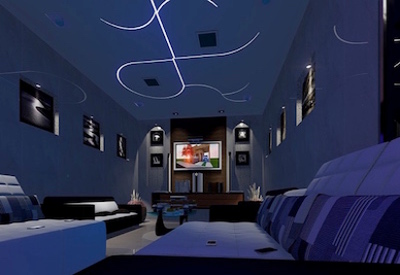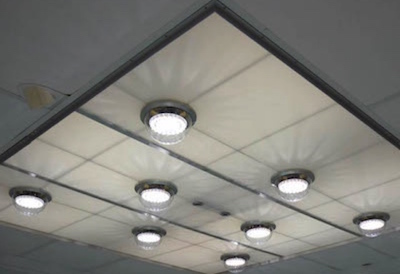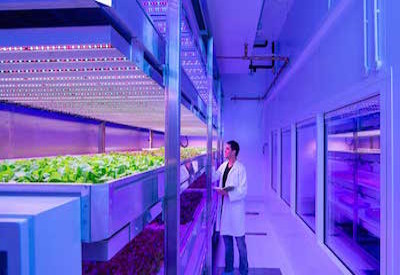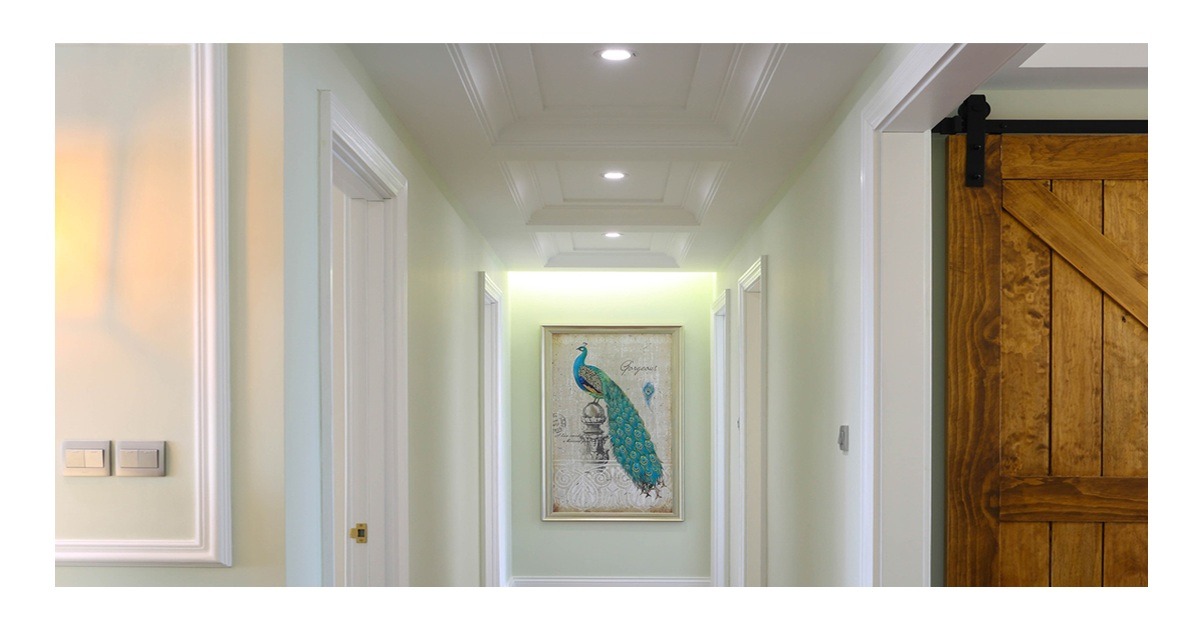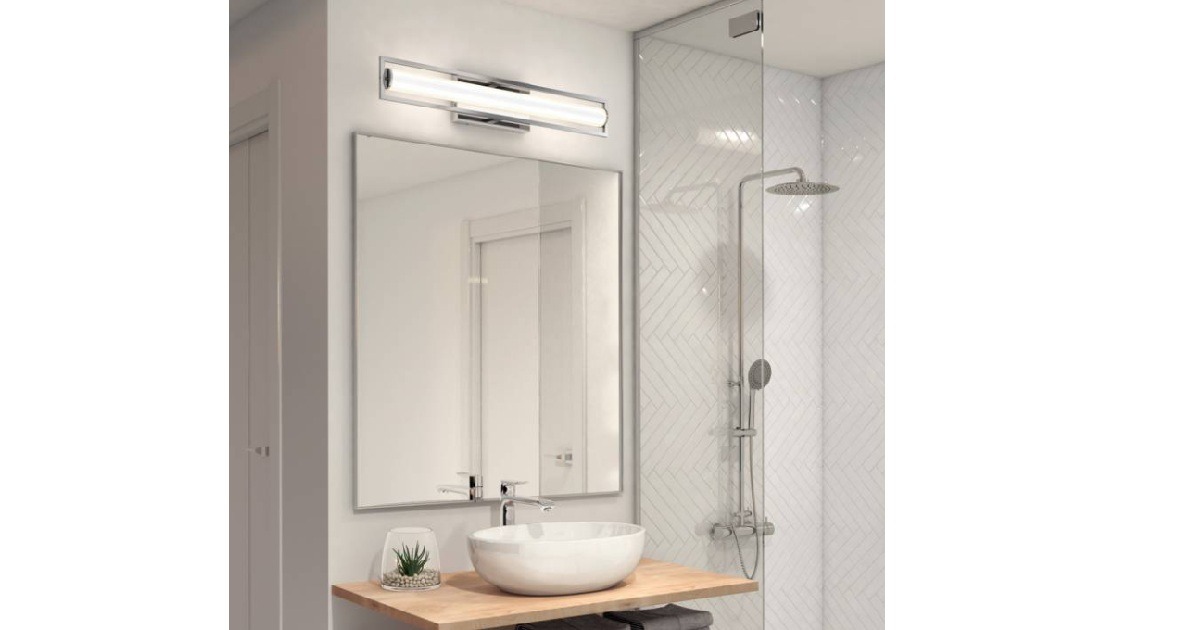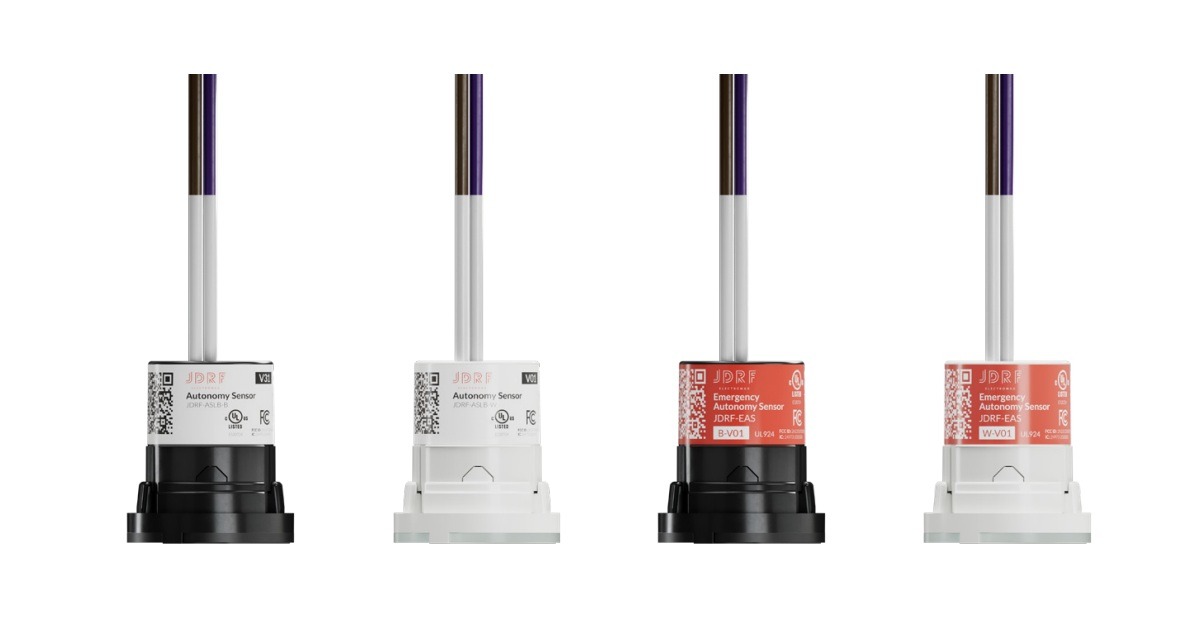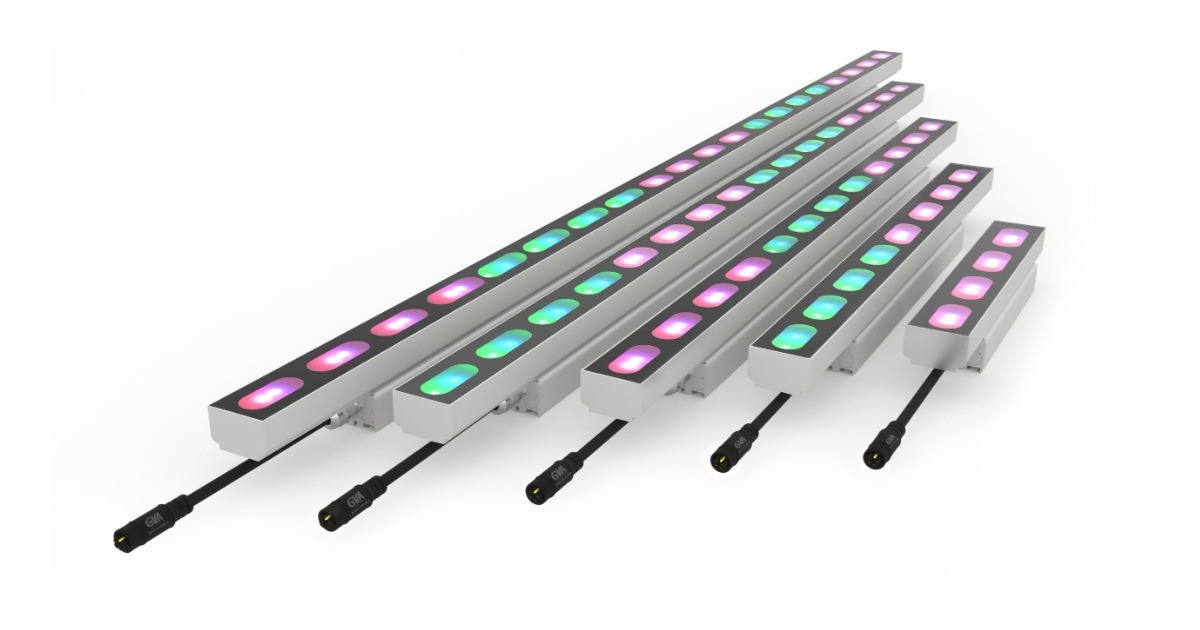On the Road Again: Considering the Latest Roadway, Site, and Area Lighting Standards
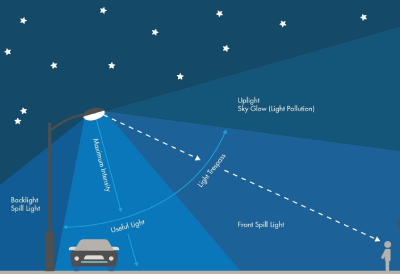
June 9, 2021
By Caroline Donkin, Optical Designer, Lumenpulse
For way too long, site, area, and roadway calculations focused on performance, light levels, and uniformity. Pole spacing has been a top consideration, propelling optical design to new heights, but also pushing luminous density in higher angles, promoting the use of glarier products, and driving light levels up to an excessive and unnecessary amount. Sure, transit areas are complex applications, and they need to be brought back to basics throughout the design process to make sure minimum requirements are met and that public security is maintained, but once the foundations are established, design intent can be enhanced. A fully studied application and well-selected products can help intensify contrast, reduce impacts on the environment, and unveil an outdoor nighttime experience. It’s not just about quantity anymore, exterior lighting quality is here and now.
Back to Basics
Illuminance measures the intensity of light on a surface area. It can be a physical surface or an imaginary plane. Its unit is footcandle (fc) in the imperial system (lumens per square feet) and lux in the metric system (lumens per square metre). Site and area lighting is based on illuminance calculations. The main reason is that reflectance values are very variable, and that type of information is difficult to obtain. Certain portions of roadway lighting such as pedestrian zones, intersections, interchanges, and curves also use this method. Illuminance is not dependent on the observer and concerns only the incidence of light on a surface.
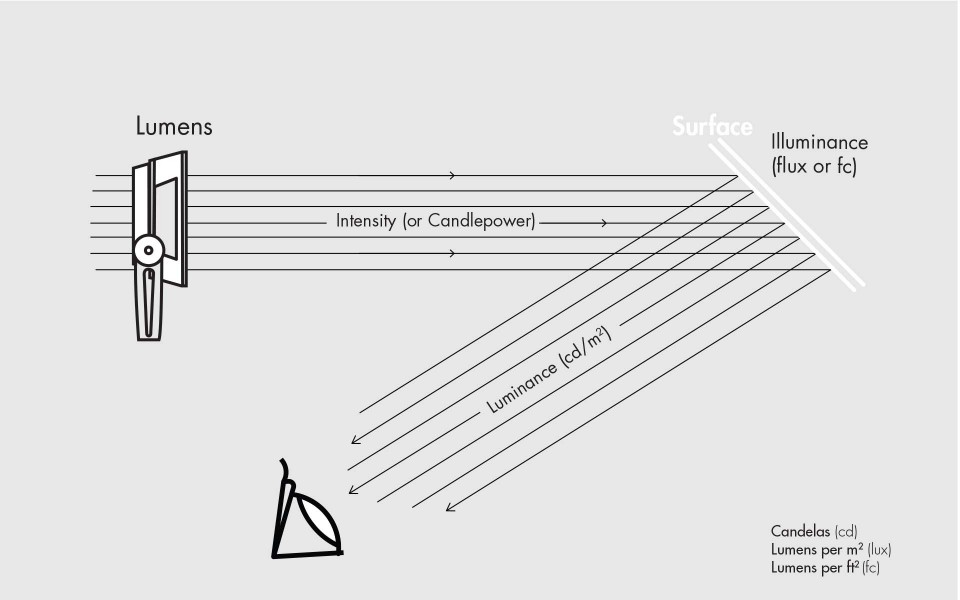
Relationship of basic lighting terms.
Luminance is the amount of visible light viewed from a specific angle. It is dependent on the observer; therefore, it is used to describe how bright a surface appears. Its unit is candelas per square metre (cd/m²). Straight runs of roadway need to be designed using the luminance method. This method is driver (observer) dependent and indicates how bright the road is based on its reflectance category. Illuminance to luminance conversions are permitted on curved sections of roadway (for example: on R3 reflectance pavement equivalence of 1 cd/m² is 13.3 lux).
In roadway conditions, veiling luminance is the criteria for limiting glare. The veiling ratio is the maximum divided by the average luminance. This way, the luminaire ‘’brightness” is considered in relation to the pavement ‘’brightness” as seen by the driver.
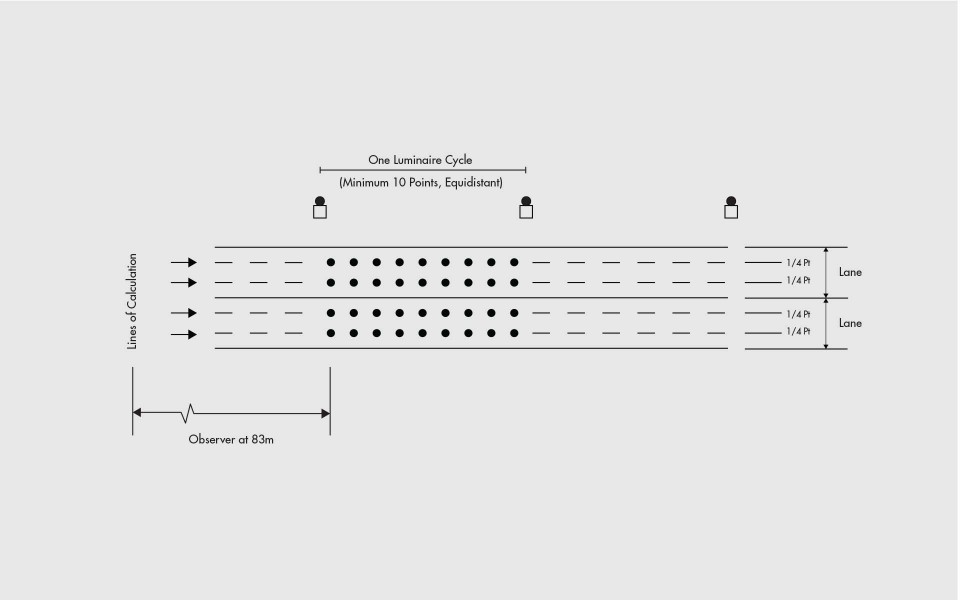
Location of calculation points, luminaires, and observer for illuminance, luminance, and veiling luminance calculations on roadways.
There are two distinct types of glare; disability glare and discomfort glare. Disability glare needs to be considered in calculations because it reduces visual performance. This is the type of glare that creates a veil before the eyes. The phenomenon is due to the loss of retinal image contrast as a result of light scattering through the eye. It is also considered in relation to visual adaptation. In the Illuminating Engineering Society (IES) method of calculation Veiling Luminance is computed at each point of luminance with an observer 83m back, at 1.45m height, and a line of sight one degree below the horizontal plane. The maximum Veiling Luminance ratio, used as the typical recommended value for glare, is achieved by dividing the maximum value of Veiling Luminance divided by the average pavement luminance.
Discomfort glare causes annoyance or pain but is not necessarily impairing for visibility. Luminance and size of the emitting surface are probable causes of discomfort. Line of sight and background luminance could also be a culprit. There are different methods for quantifying discomfort glare: Unified Glare Rating (UGR), Visual Comfort Probability (VCP), Cumulative Brightness Evaluation (CBE), Glare Control Mark, as well as Schmidt-Clausen and Bindels. No consensus has yet been reached on the use of these methods. The International Commission on Illumination (CIE) has adopted UGR for indoor luminaires, based on the European Glare Index, and the Glare Control Mark model for outdoor fixtures. Because the European Glare Index is based on average luminance over a surface, without considerations for uniformity, UGR has its limits. The Glare Control Mark can be calculated from the photometric and geometric quantities of a lighting installation. This method seems to provide a full in context estimation, yet still has resulted in anomalies. In light of this information, we can conclude that discomfort glare has not yet found its perfect metric. Discomfort glare can only be adequately evaluated in context, considering general luminance of the environment, the fixture’s light-emitting surface luminance, and dimensions, unit quantity, and positions, in addition to the observer position and viewing direction.
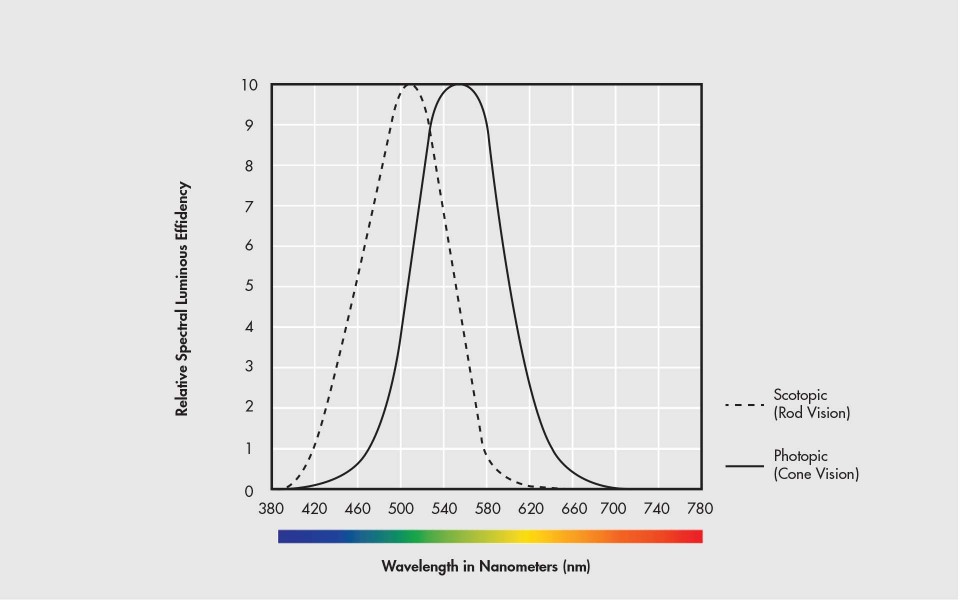
Human visual sensitivity as a function of wavelength.
Spectral effects add to the complexities of nighttime conditions and can change our visual performance. Our perception of brightness may vary in these low light levels based on spectral power distribution. Mesopic content is not considered over driving speeds of 56 km/h. At this speed, the driver is primarily in adapted photopic vision, and the method of roadway calculation is based on a direct line of sight. No adjustment of calculations based on spectral content should be applied to roadway, site, and area calculations. Investigations are ongoing concerning applications at lower speeds.
Here and Now
New considerations for outdoor roadway, site, and area lighting are based on improving visual quality and, therefore, the quality of light. Quality designs are essential for security and the wellbeing of the population. The use of appropriate optical performances for the application, the efficiency of luminaires, and the use of innovative control systems are key. Lumens/watt are only relevant if the flux is usefully directed and reaching the targeted area. In heavy pedestrian traffic, luminaires should be installed on a human scale (10-25ft). In general, glare and system efficiencies are harder to obtain at this lower height, and the cost of lighting systems will be greater than areas of lower pedestrian conflict. A balance between glare and vertical surface illuminance is crucial to maintain good visibility of pedestrians and to provide security by illuminating nearby facades and avoiding an obtrusive condition for motorists.
Controls will aid energy conservation and monitoring; they can also render a dynamic installation when used insightfully. Lighting the night is aimed principally at providing security, although it should present an experience where it does not impede the reliability of the installation.
The More Uniform, the Better?
Well, not quite. Contrasting used to improve hazard detection is now at the forefront of design recommendations. An object in positive contrast can be distinguished due to a higher luminance than its background. Oppositely, an object in negative contrast has lower luminance than its surroundings. Significance has been accorded to the balance between positive and negative contrast, making it easier to distinguish obstacles from their background. .

Example of negative contrast (left) and positive contrast (right) – Marc Green
In RP-08-18, it is stated that if Spectral Power Distribution (SPD) of the source is inaccurate, it follows that lumen values and other quantities will not be accurate. Based on Department of Transportation (DOT) research, better Colour Rendering Index (CRI) increases colour contrast making it easier to distinguish objects, animals, and people from their background, from a static observer’s point of view. CRI also makes it easier to identify vehicles or people in unlawful situations. At higher speeds, CRI has a negligible effect due to our tendency to focus on the road far and straight ahead, also called tunnel vision. More recent studies should arise, examining the effect of CRI, especially in lower speed applications.
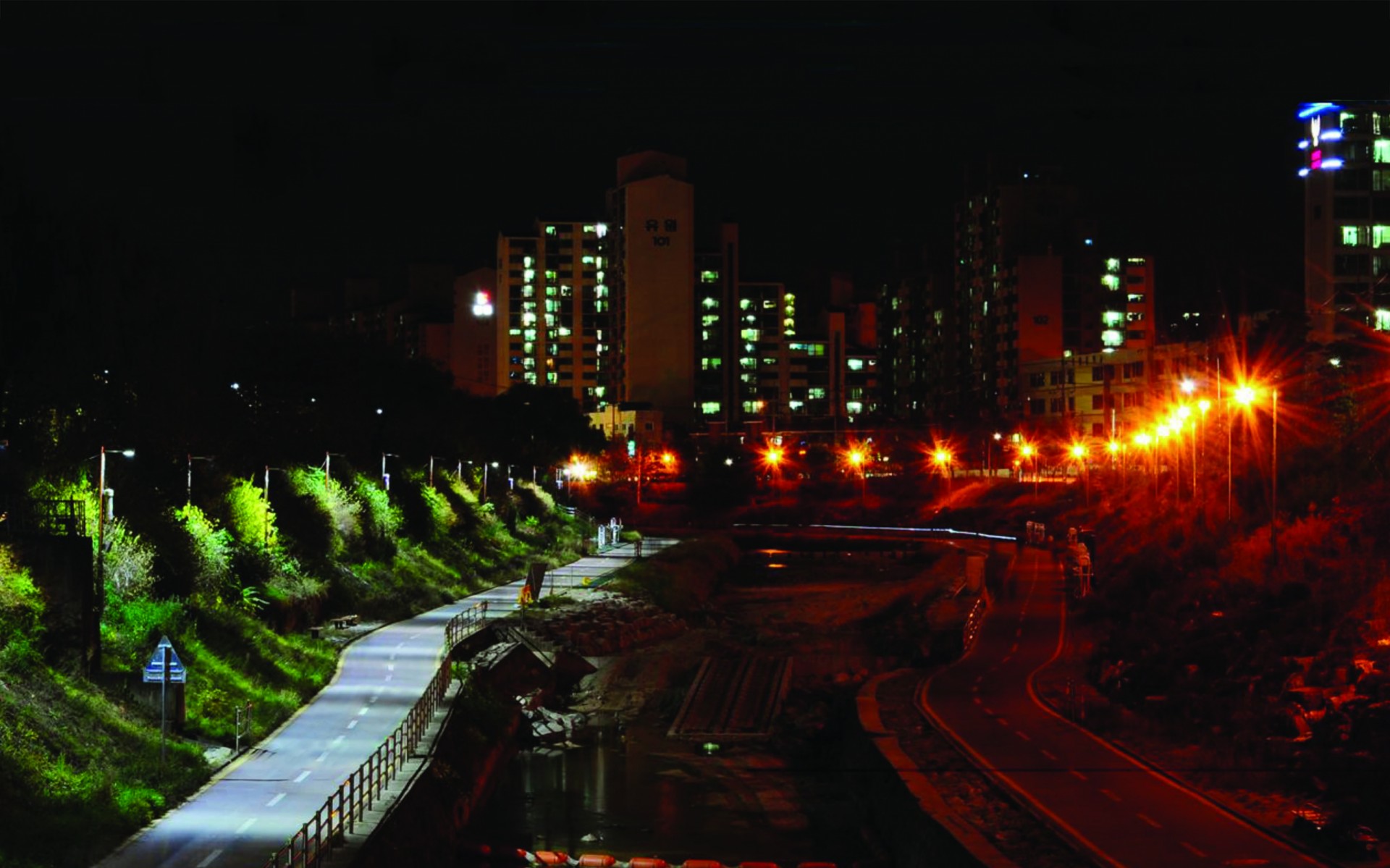
School of Natural Resources & Environment, University of Michigan
Get Rid of the Excess
The conservation and protection of the environment is a current topic in all spheres, including lighting. The trend is to diminish the various impacts of nighttime lighting, such as skyglow and the negative consequences on plants and wildlife. Let’s avoid over lighting; more is not better. Quality designs are those that reduce glare, uplight, and light trespass. In the past years, concerns about spill light and its effects on the night’s sky, as well as wildlife and plants, have risen. The IES now recommends a maximum initial vertical illuminance at the property line. The maximum levels are divided per lighting zone. This implies new calculations at initial value, resembling LEED calculations.
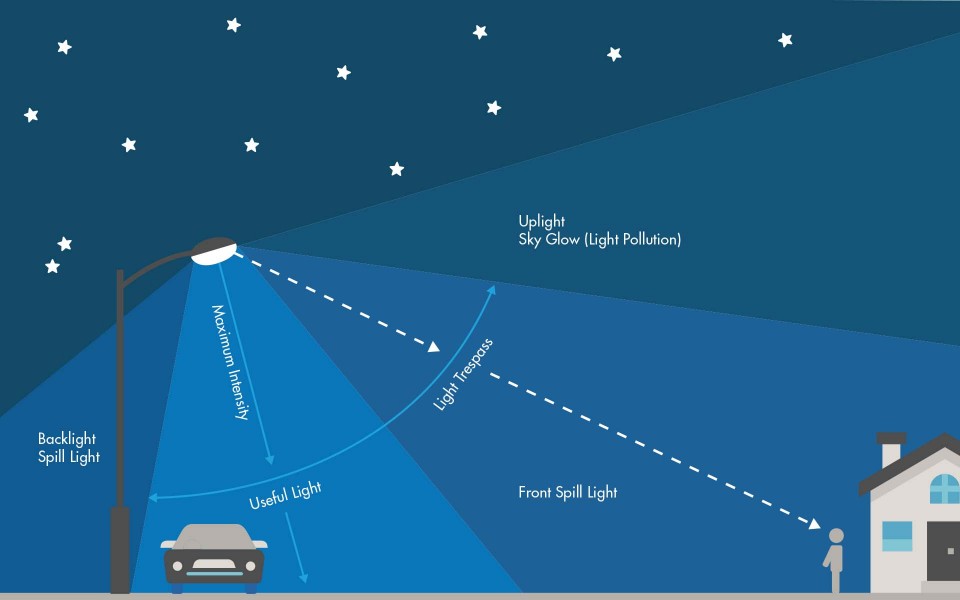
The choice of an inappropriate distribution or the use of unshielded luminaires may cause obtrusive light. Obtrusive light is intrusive, noticeable, and unwelcome. It can be defined by the type of light that passes through windows, into homes, to disrupt private living. Spill and obtrusive light are unnecessary; they are unused energy that can disturb and hinders the circadian rhythm of living beings.
The Glare (G) rating, as presented in the IES Luminaire Classification System for Outdoor luminaires (TM-15-11), is an excellent quick evaluation metric to establish the quantity of blinding light for a driver, present between 60-90 degrees. Still, a fixture needs to be considered in context. There is no differentiation between sidelight and front light, so considerations for observer position and adjacent environment need to be established and evaluated before choosing the appropriate product.
The same comment can be translated to the backlight (B) rating. In certain situations, that light is wanted and usefully directed. For example, it can be used to illuminate the sidewalk in an urban setting.
On the other hand, the Uplight rating (U) is rather straight forward and should be strictly used in all situations. Uplight is untargeted light that profoundly impacts the visibility of the stars. Approximately one-fifth of the population will grow up without seeing the Milky Way. People, animals, and even plants need to sleep in darkness. Some creatures have been affected in their basic functions, such as navigation and communication, because of skyglow. An up-light rating of U0 is highly recommended for mitigation of skyglow, although a U1 rating can be considered when looking at post-up fixtures. These decorative type luminaires should be mainly chosen for aesthetic reasons. Lights should be turned off or brought to a minimum after activity hours.
Recent publications present new opportunities to review, create, and surpass our accustomed methods. Take the opportunity to engage in the application, weigh the impacts of your decisions, expand your awareness, upgrade to the next level of consciousness, and take control of your lighting system. Make sure you have chosen the appropriate distribution and Colour Correlated Temperature (CCT) for the function, select fixtures with better CRI, acceptable SPD, and use other contrasting techniques. Avoid over lighting, reduce glare, uplight, light, trespass, and utilise controls to save money and benefit natural habitat. A combination of enlightened thinking and proper products will help achieve a secure, performant, sustainable, and high-quality lighting scheme.
Published with the written permission of Lumenpulse


